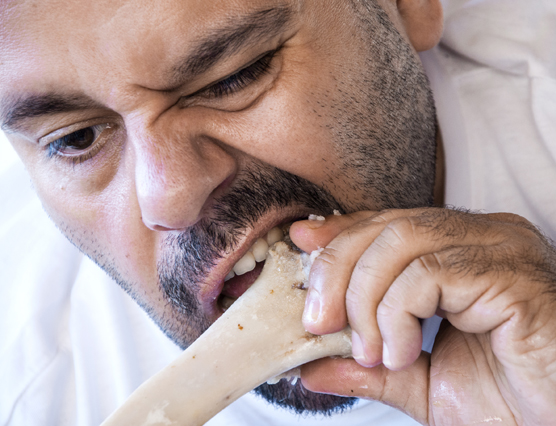Unless you have been living in a cave, you are probably aware of the Paleo Diet. It has dominated media for a while but does this make it a healthy diet to follow?
If you are unaware of the basics of the modern Paleo Diet the main principles which create this diet are:
- High protein
- High fat
- Low carbohydrate with no grains
- No dairy products
Protein is important for muscle growth and maintenance but most foods we eat contain protein and to achieve the recommended amount for most people per day of between 0.8-1.2g per kilogram is not difficult with a balanced diet. Eating too much is the same as any macronutrient (carbohydrate, fat or protein) eaten in excess, will be stored as fat.
Fat is important for many functions in the body including providing energy for the heart, however there are certain fats which increase LDL (bad) cholesterol such as saturated fats. Butter and coconut oils are recommended in the Paleo Diet and these fats increase LDL cholesterol. Coconut oil actually contains more saturated fat than butter!
The Australian Guide to Healthy Eating recommends replacing the saturated fats with a combination on monounsaturated and polyunsaturated fats such as olive, canola, sunflower and safflower oil. Monounsaturated fat is also found in foods like avocado and a combination of monounsaturated and polyunsaturated fats can be found in nuts. Monounsaturated and polyunsaturated assist in promoting HDL or good cholesterol in the blood, decreasing the risk of the risk of heart disease.
Carbohydrate is vital for the brain to function, for a person to be able to exist, without doing anything just needs 2g/kg/day, without adequate carbohydrate the body can go into ketosis, which can cause the body to go into a coma! There is strong evidence that a diet which includes whole grains support a healthy weight, prevents central obesity (the beer gut) and lower body mass index. Legumes (foods like chickpeas, red beans, lentils) help reduce weight gain. Legumes and whole grains are also a great source of vitamins and fibre which helps us feel fuller longer, as well as prebiotics, which help the gut stay in balance with more good bacteria rather than bad bacteria.
Dairy is a great source of calcium, with most women not eating or drinking enough calcium the removal of dairy is a concern. Dairy also provides protein and B2 and B12 vitamins for health. We need calcium for many functions like muscle contractions, heart functioning, enzyme and nervous system transmitting as well as strong bones. Without a medical need to cut dairy, cutting food groups can limit choices and variety in the diet and choices which in the long term can lead to deficiencies.
So what is the verdict? Cutting out certain food groups and including others which are linked to disease cannot be recommended if using the current Australian Dietary Guidelines. The Australian Dietary Guidelines are a great way to structure your diet, it is based on scientific evidence and provides a balance diet covering all the food groups. By going to https://www.eatforhealth.gov.au/guidelines/australian-guide-healthy-eating you can find the recommended servings for each food group for your sex and age.
If in doubt and wanting more guidance an Accredited Practicing Dietician is qualified to create a diet for your individual needs. This person can be found by going to the Dietetics Association of Australia where there is a list of people who can help you in your area.
References:
- Stewart R. Griffith Handbook of Clinical Nutrition and Dietetics. 4 ed. Queensland, Australia: Griffiths University; 2010. 252 p.
- Australia DAo. Dietetics Association of Australia Canberra: DAA; 2015 [updated 2015; cited 2015 15/8/2015]. Available from: http://daa.asn.au/for-the-public/smart-eating-for-you/nutrition-a-z/paleo-diet/part-2-the-modern-paleo-diet-what-is-it/.
- Council NHaMR. Australian Dietary Guidelines (2013) [Document]. Canberra: Commonwealth of Australia; 2013 [updated 29/7/20114; cited 2014 15/8/2014]. Available from: https://www.nhmrc.gov.au/guidelines/publications/n55.




